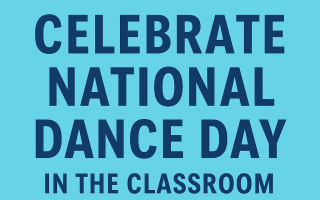
I Am My Ancestors’ Wildest Dreams
As an African American ballet teacher, I dance Black history,
Every plié, every leap, a whispered legacy.
It doesn’t fall short on me
The roads paved in blood, sweat, and dignity,
The sacrifices made so I could stand free,
So I could teach, so I could be.
I am my ancestors’ wildest dreams,
A vision they held beneath moonlit beams,
Feet bound by chains, yet minds reaching high,
Hoping one day we would touch the sky.
Their strength moves through my tendu,
Their rhythm hums in the pointe shoe,
Their perseverance lives in my art,
A story told through every heart.
Representation matters, I see it in my students’ eyes,
A spark ignites, a future realized.
Because when they see me, they see the proof,
That Black belongs in ballet’s truth.
So I stand, I teach, I dream, I soar,
A testament to those who came before.
In every class, on every stage,
I write new chapters on history’s page.
I am my ancestors’ wildest dreams,
And I will dance until the world believes.
Representation as a Black ballet teacher matters on both ends of the spectrum because it challenges long-standing stereotypes while creating space for inclusion and belonging. For Black students, seeing a Black teacher leading a ballet class affirms that they belong in this art form, a space that has historically excluded them. It reinforces the idea that ballet is not just for one race or body type, but for anyone with passion and dedication. It inspires them to pursue their dreams with confidence, knowing they are not alone in their journey. At the same time, for white students, having a Black ballet teacher normalizes diversity in leadership and artistry, breaking down unconscious biases and expanding their understanding of who belongs in ballet. It teaches them that excellence in dance transcends race and that talent, discipline, and expertise are not confined to a single demographic. Representation doesn’t just uplift Black dancers—it educates and reshapes the perspectives of everyone in the room, fostering a more inclusive and equitable future for ballet.
Representation is so important it goes beyond who teaches and who learns, it’s about honoring the past, shaping the present, and inspiring the future. If you’re looking for more ways to celebrate Black excellence in dance, check out these resources: 10 Quotes by Legendary Black Dancers and Choreographers for wisdom from trailblazers who paved the way, Affirmations for Dancers: The Power of Positive Thinking to uplift and motivate students, and Dance Lesson Plans for Black History Month for meaningful ways to incorporate history into your teaching. Each of these resources reinforces why representation matters and how we can continue creating inclusive spaces in the dance world.
Happy Dancing!
Taylor B




